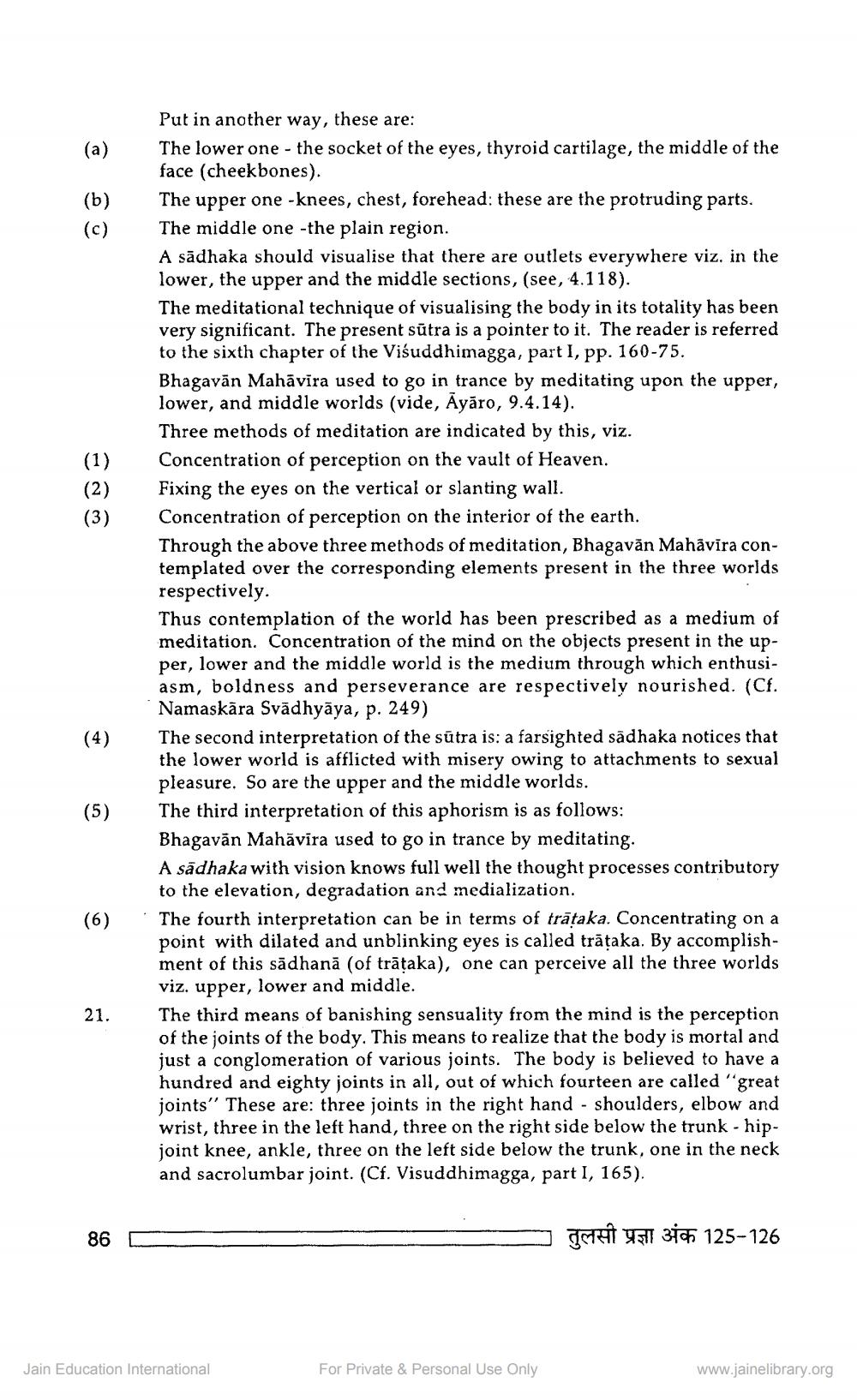________________
(a)
(b)
(C)
(1)
(2) (3)
Put in another way, these are: The lower one - the socket of the eyes, thyroid cartilage, the middle of the face (cheekbones). The upper one-knees, chest, forehead: these are the protruding parts. The middle one - the plain region. A sādhaka should visualise that there are outlets everywhere viz. in the lower, the upper and the middle sections, (see, 4.118). The meditational technique of visualising the body in its totality has been very significant. The present sūtra is a pointer to it. The reader is referred to the sixth chapter of the Visuddhimagga, part I, pp. 160-75. Bhagavān Mahāvīra used to go in trance by meditating upon the upper, lower, and middle worlds (vide, Ayāro, 9.4.14). Three methods of meditation are indicated by this, viz. Concentration of perception on the vault of Heaven. Fixing the eyes on the vertical or slanting wall. Concentration of perception on the interior of the earth. Through the above three methods of meditation, Bhagavān Mahāvīra contemplated over the corresponding elements present in the three worlds respectively. Thus contemplation of the world has been prescribed as a medium of meditation. Concentration of the mind on the objects present in the upper, lower and the middle world is the medium through which enthusiasm, boldness and perseverance are respectively nourished. (Cf. Namaskāra Svādhyāya, p. 249) The second interpretation of the sūtra is: a farsighted sādhaka notices that the lower world is afflicted with misery owing to attachments to sexual pleasure. So are the upper and the middle worlds. The third interpretation of this aphorism is as follows: Bhagavān Mahāvira used to go in trance by meditating. A sadhaka with vision knows full well the thought processes contributory to the elevation, degradation and medialization. The fourth interpretation can be in terms of trātaka. Concentrating on a point with dilated and unblinking eyes is called trāțaka. By accomplishment of this sādhanā (of trāțaka), one can perceive all the three worlds viz, upper, lower and middle. The third means of banishing sensuality from the mind is the perception of the joints of the body. This means to realize that the body is mortal and just a conglomeration of various joints. The body is believed to have a hundred and eighty joints in all, out of which fourteen are called "great joints" These are three joints in the right hand - shoulders, elbow and wrist, three in the left hand, three on the right side below the trunk - hipjoint knee, ankle, three on the left side below the trunk, one in the neck and sacrolumbar joint. (Cf. Visuddhimagga, part I, 165).
(4)
(5)
(6)
21.
86
-
got 4511 31ch 125-126
Jain Education International
For Private & Personal Use Only
www.jainelibrary.org




